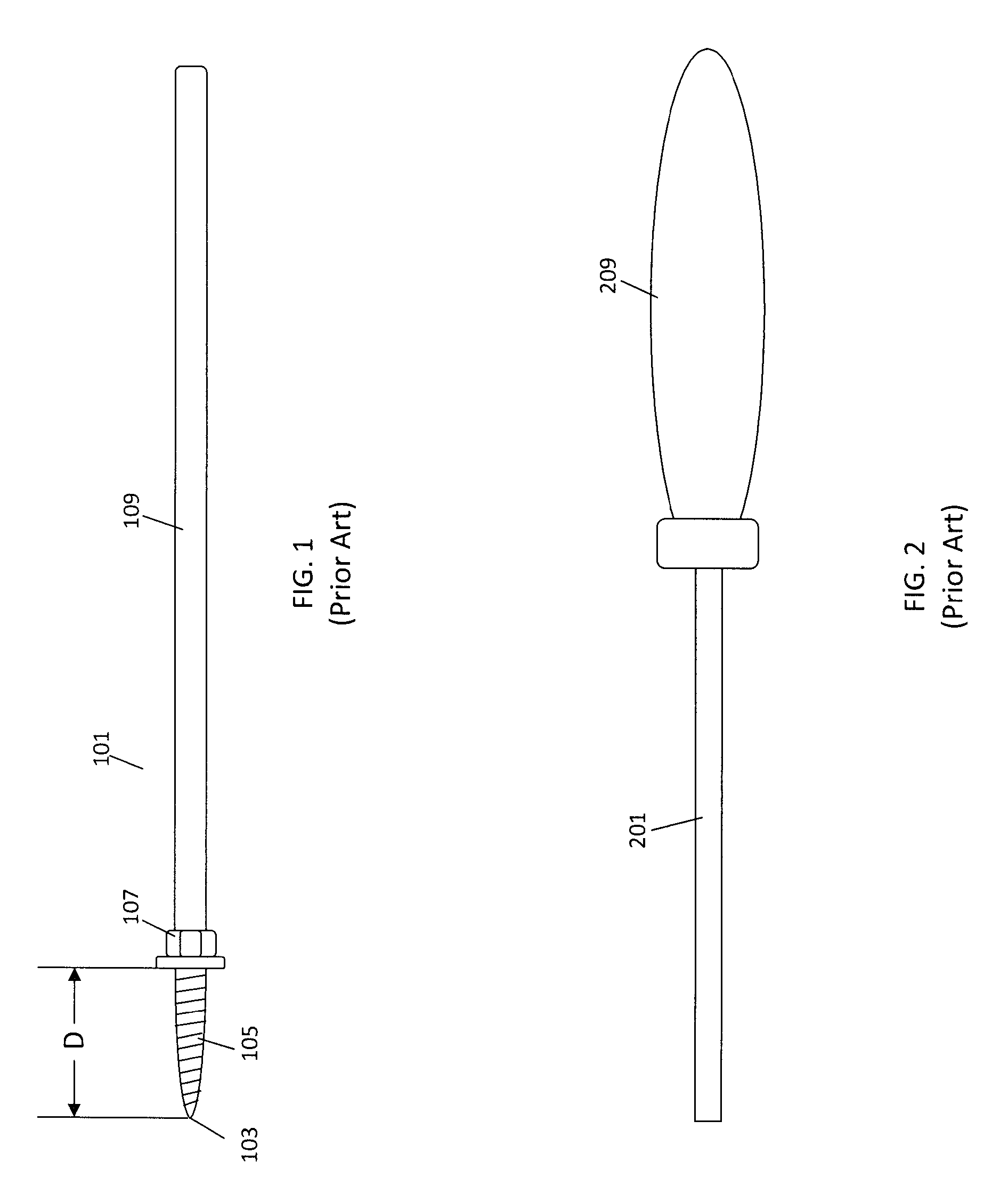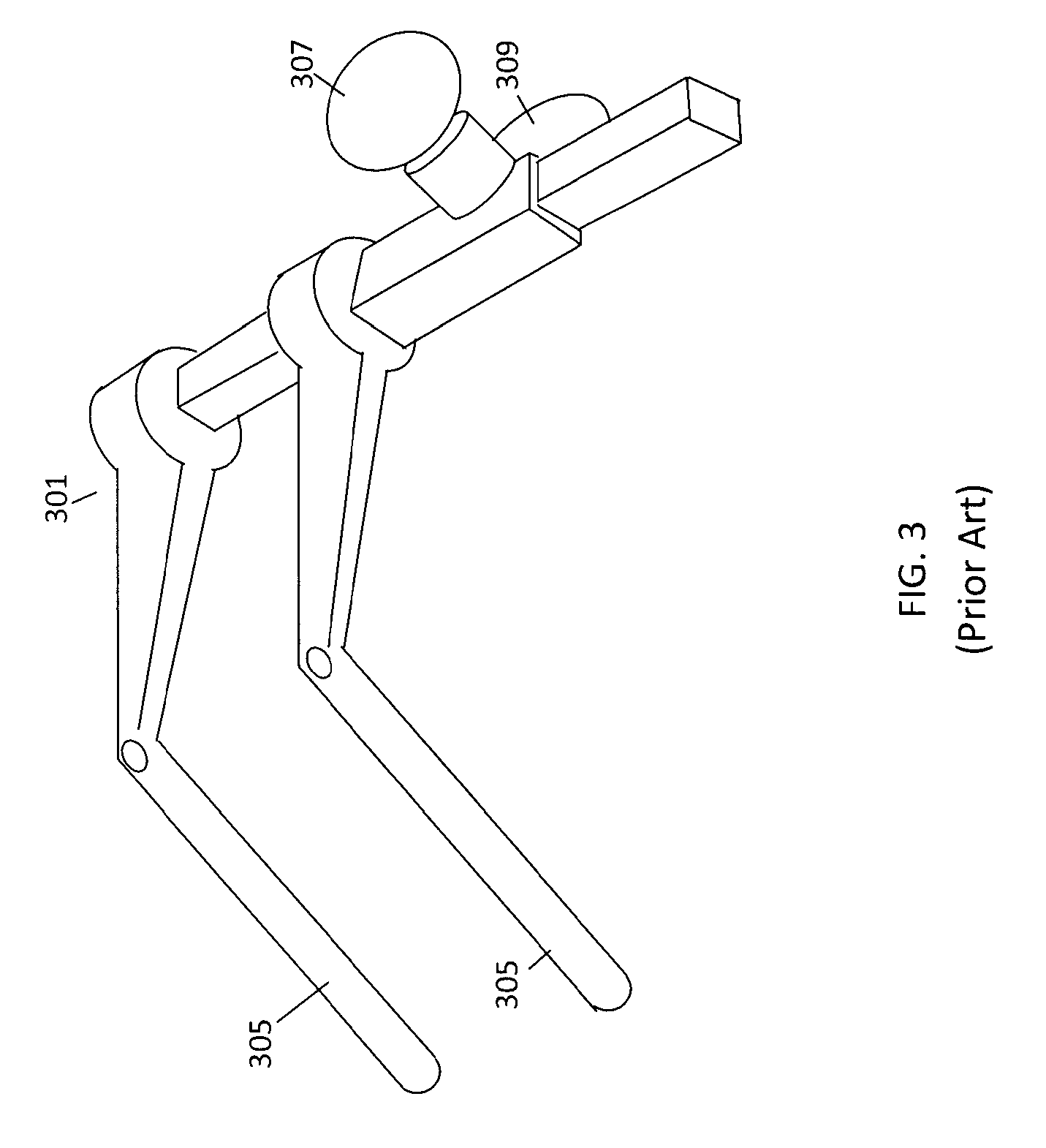Casper pin apparatus and method of use
a technology of casper pins and pins, which is applied in the field of casper pin apparatuses and methods of use, can solve the problems of large amount of blood difficult to properly size the plate length, and bleeding from the holes formed in the vertebrae, so as to achieve easy determination, no wasted time, and easy to find the proper insertion hole
- Summary
- Abstract
- Description
- Claims
- Application Information
AI Technical Summary
Benefits of technology
Problems solved by technology
Method used
Image
Examples
Embodiment Construction
[0033]The present invention is directed towards an improved Casper pin and special tools used to insert and remove the Casper pins from vertebrae. The tools include insertion wrenches that insert the Casper pins to specific insertion depths and a removal tool that can only be used to extract the Casper pins. The inventive insertion wrenches allows a single length pin to be inserted into a vertebra to any required insertion depth. The removal wrench only allows the Casper pin to be removed from the vertebra and may not be used to insert the Casper pins into the vertebra.
[0034]With reference to FIG. 4 the inventive Casper pin 421 includes a front tip 423, a substantially cylindrical body and a back end 431. The tip 423 may have a cutting surface 427 to assist in forming the holes and internal threads in the vertebrae. The pin 421 also has a threaded 425 outer diameter that extends from the tip 423 to the back portion 429. For example, the threads can extend from the tip 423 along the ...
PUM
 Login to View More
Login to View More Abstract
Description
Claims
Application Information
 Login to View More
Login to View More - R&D
- Intellectual Property
- Life Sciences
- Materials
- Tech Scout
- Unparalleled Data Quality
- Higher Quality Content
- 60% Fewer Hallucinations
Browse by: Latest US Patents, China's latest patents, Technical Efficacy Thesaurus, Application Domain, Technology Topic, Popular Technical Reports.
© 2025 PatSnap. All rights reserved.Legal|Privacy policy|Modern Slavery Act Transparency Statement|Sitemap|About US| Contact US: help@patsnap.com



